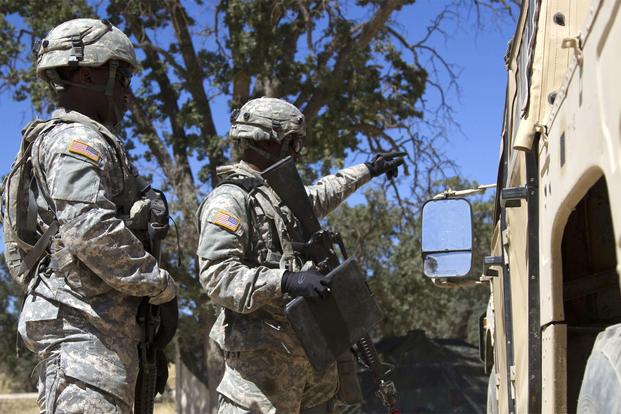The chief of the Army Reserve said Monday he wants to stand up a package of forces capable of mobilizing and deploying into a major contingency operation much faster than traditional Reserve units.
"We are calling it Ready Force X; we are still trying to figure out what Ready Force X is going to look like, what's in it and what war plans inform that requirement," Lt. Gen. Charles Luckey, chief of the Army Reserve and commanding general, U.S. Army Reserve Command, told a group of defense reporters in Washington, D.C.
"I have asked the G-3/5/7 of U.S. Army Reserve Command down at Fort Bragg to do an assessment of capabilities that we think we -- the United States Army Reserve -- ought to provide to the warfighter and the Army on fairly short notice."
The Reserve is made up of commands designed provide support, such as aviation, medical, military intelligence, civil affairs and theater sustainment, to active-duty and National Guard combat forces.
Over the last 15 years, the Army Reserve has built readiness and formations in a rotational manner, Luckey said.
Now, what Reserve forces "need to be able to do is anticipate a contingency demand different than a known demand," he said.
"Instead of planning for a unit deploying sometime in 2019 and have several years to prepare, we are now in a situation where we have some capabilities that we may need to deploy in less than 90 days and, in some cases, significantly less than 90 days," Luckey said.
"What are the basket of capabilities that need to be mobilized and deployed fairly quickly to be able to bring that additional capability and capacity to the Army for certain critical warfighting functions?"
This will be a challenge since the Army Reserve is made up of part-time soldiers, Luckey said.
"The challenge from the readiness perspective is the Army Reserve has to be ready enough to be relevant to support the warfighter and the Army, but not so much that nobody can afford to keep their civilian job because of the demands," Luckey said.
Another challenge will likely come from budget constraints, he said, acknowledging that there is a "high likelihood" that it is going to cost more to generate and sustain this new type of readiness.
But "I want to make sure, before I start talking about money or needing more resources, I am very clear on what effect I think I can achieve if I had more resources," he said.
"In the main, this Ready Force X construct that we are talking about -- this sort of first tranche of formations that would need to be ready on fairly short notice -- is probably in order of magnitude of somewhere between 25,000 and 33,000 people," Luckey said. "So, it's not 200,000."
Luckey said he plans to have a conversation on Dec. 16 with "the formations that we think are the right mix" to serve as Ready Force X.
Between now and late January, Luckey said he will talk with commanders of units involved to make sure they understand the mission, "so that this is not something that is a surprise."
"Candidly, part of the challenge that I am really trying to get after is what I don't want to have -- what we don't want to have -- is a battalion ... whose leadership thinks that it's on a three-to-four year timeline to deploy to Kuwait or someplace to conduct operations when, it fact, it may be needed in much shorter time frame, so I owe the leadership of that battalion a better level of awareness of what the expectation might be," Luckey said.
"A lot of this is, frankly, a journey of discovery into what is in the art of the possible in terms of generating these capabilities."
-- Matthew Cox can be reached at matthew.cox@military.com.






























